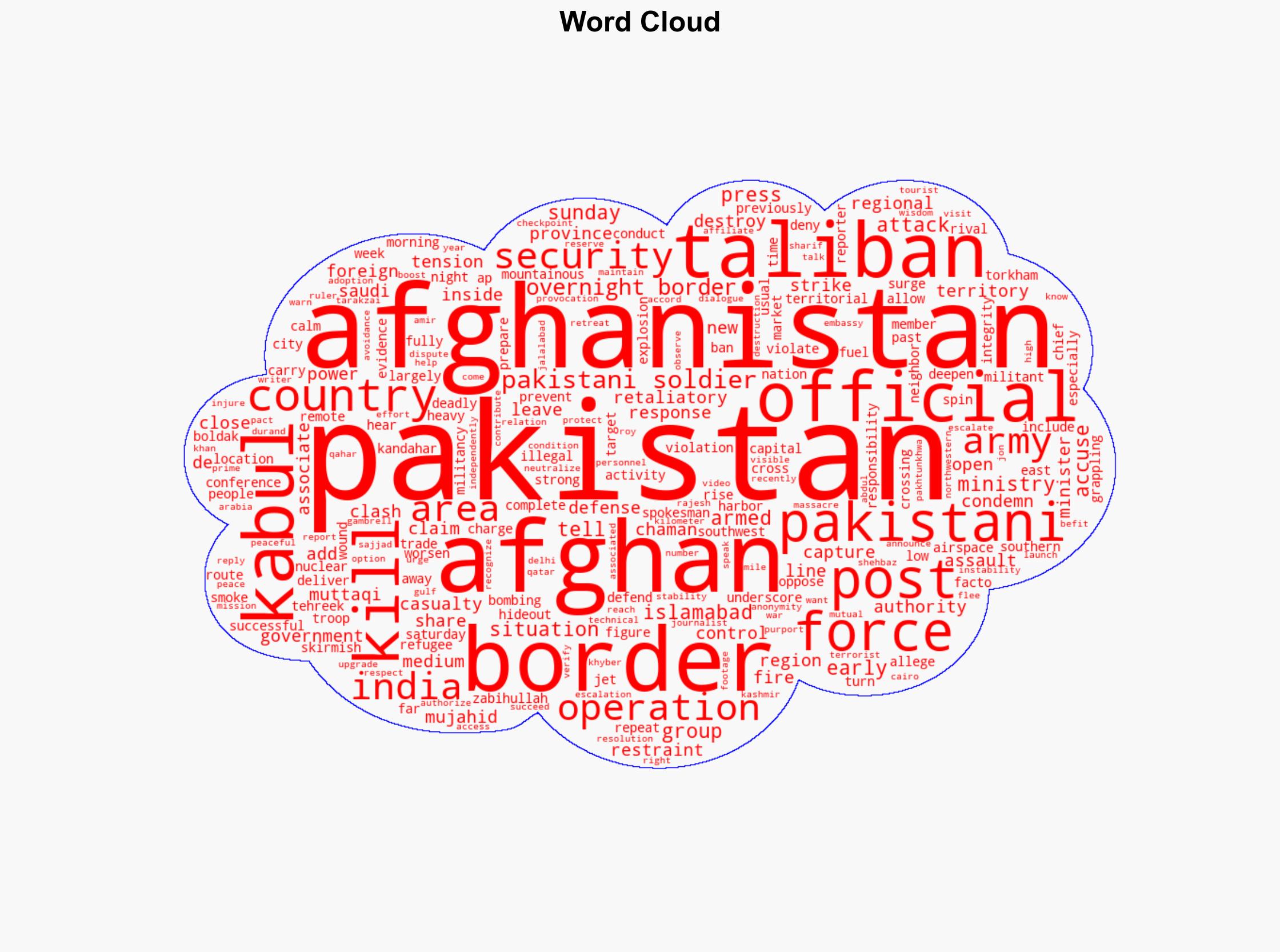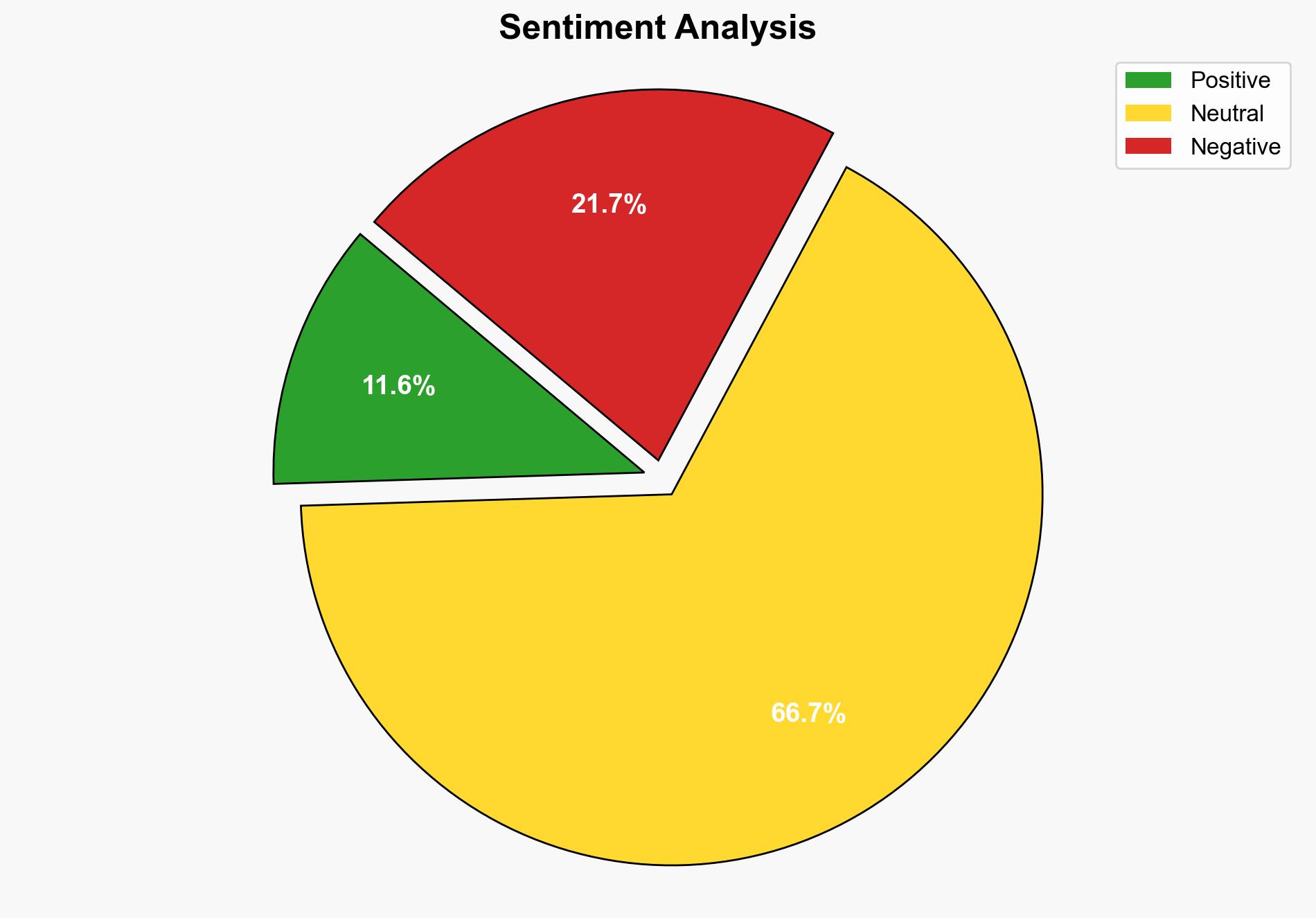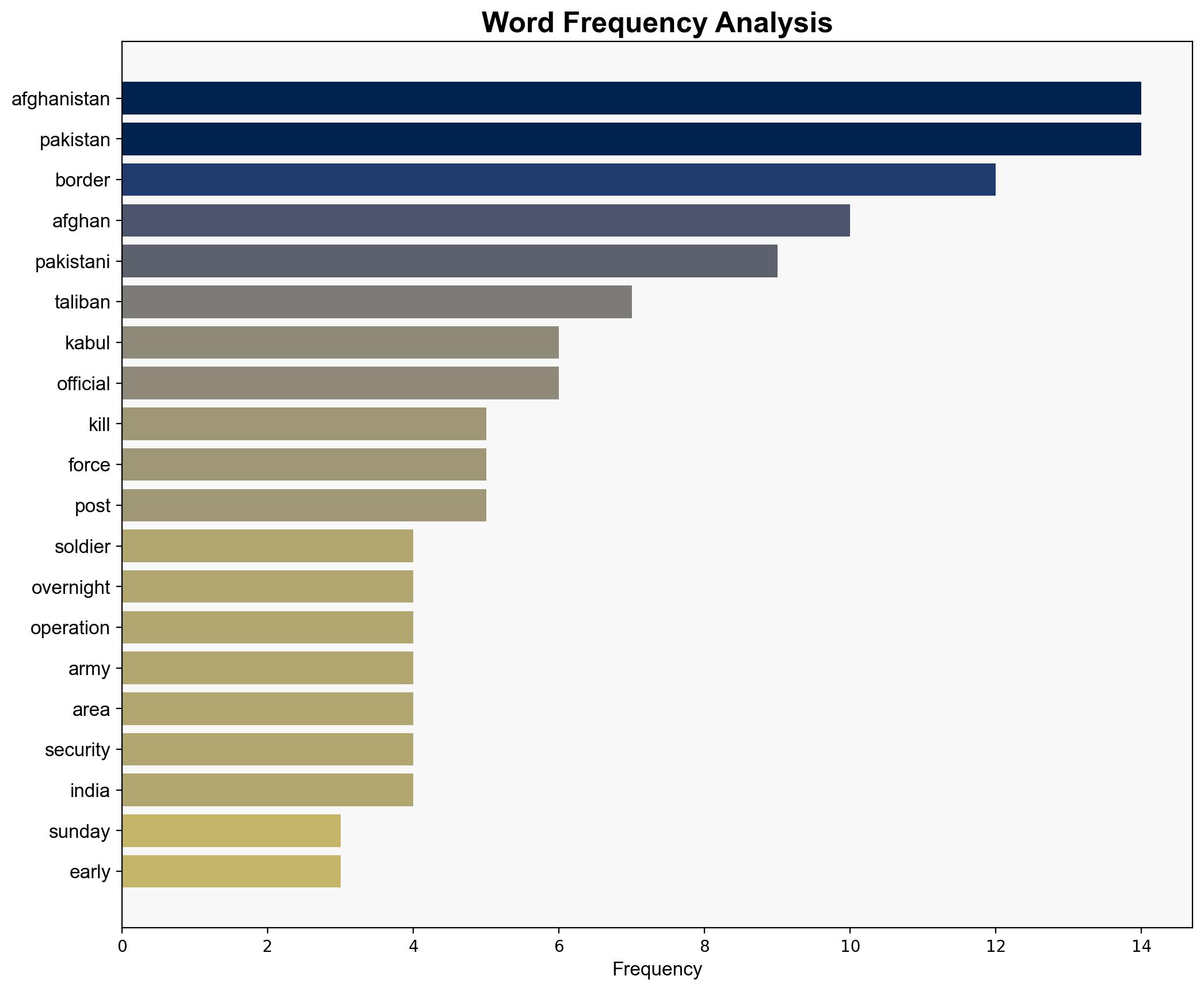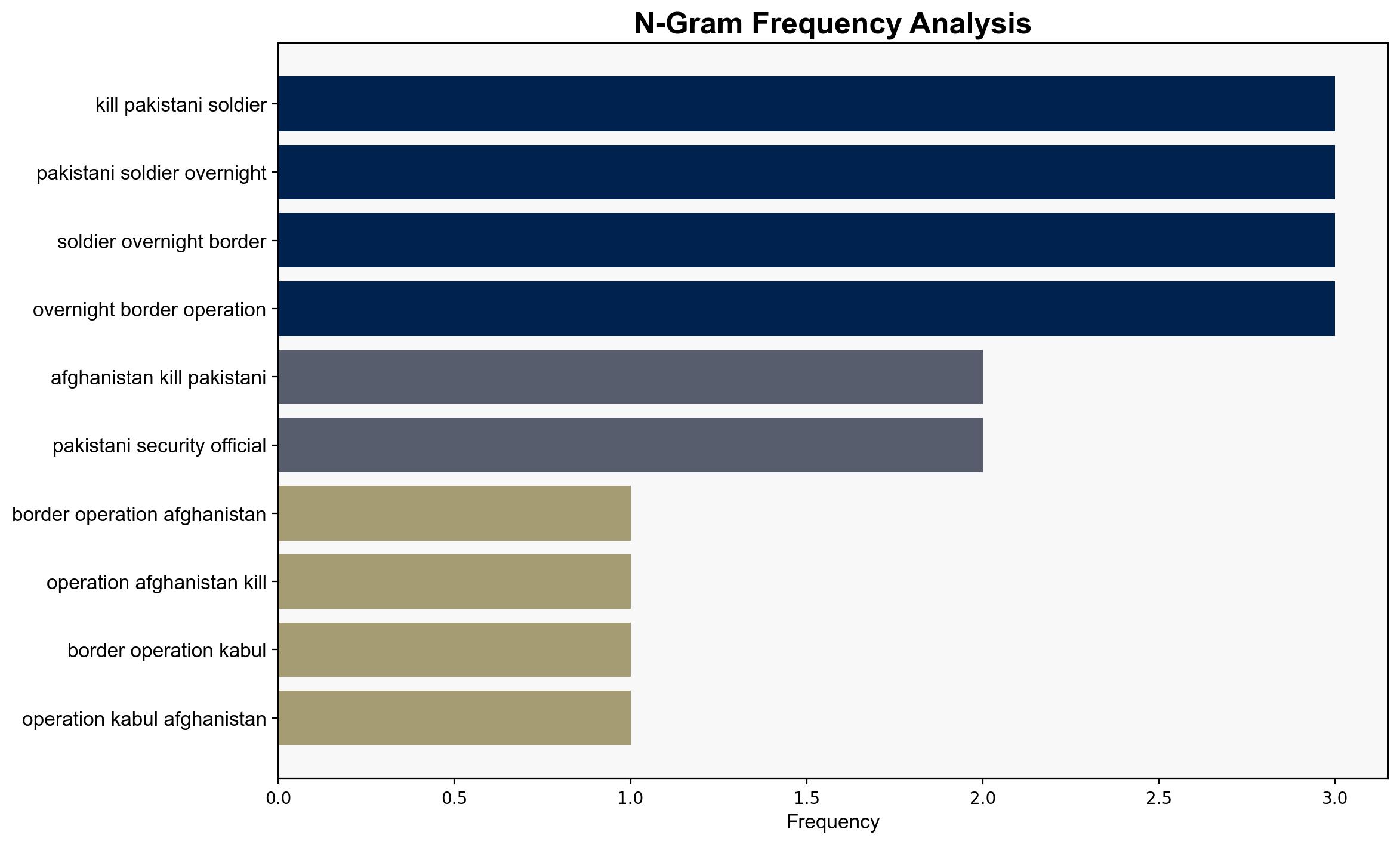Afghanistan says it killed 58 Pakistani soldiers after repeated airspace territory violations – Associated Press
Published on: 2025-10-12
Intelligence Report: Afghanistan says it killed 58 Pakistani soldiers after repeated airspace territory violations – Associated Press
1. BLUF (Bottom Line Up Front)
The situation between Afghanistan and Pakistan is highly volatile, with conflicting reports of casualties and territorial violations. The most supported hypothesis suggests that both nations are engaging in retaliatory actions to assert territorial control, exacerbating regional instability. Confidence level: Moderate. Recommended action: Urge diplomatic engagement and third-party mediation to de-escalate tensions.
2. Competing Hypotheses
1. **Hypothesis A**: Afghanistan’s claims of killing 58 Pakistani soldiers are accurate, reflecting a significant escalation in border skirmishes due to repeated airspace violations by Pakistan.
– **Supporting Evidence**: Afghan government statements, reports of heavy clashes, and retaliatory operations.
– **Contradictory Evidence**: Pakistan’s lower casualty figures and claims of destroying Afghan posts.
2. **Hypothesis B**: The casualty figures are exaggerated by Afghanistan to strengthen its negotiating position and justify military actions, while Pakistan downplays losses to maintain domestic stability.
– **Supporting Evidence**: Discrepancy in casualty reports, historical pattern of both sides inflating or deflating figures for strategic purposes.
– **Contradictory Evidence**: Independent verification of any claims is lacking, leaving room for speculation.
3. Key Assumptions and Red Flags
– **Assumptions**: Both hypotheses assume that each side’s official statements are partially truthful and partially propagandistic.
– **Red Flags**: Lack of independent verification of casualty figures; potential cognitive bias in interpreting each side’s claims; possible deception in casualty reporting to manipulate international perception.
– **Blind Spots**: Limited access to the conflict zone for independent media; potential underestimation of third-party influences, such as India or other regional powers.
4. Implications and Strategic Risks
– **Escalation Risk**: Continued border skirmishes could lead to broader military engagement, drawing in regional powers and destabilizing South Asia.
– **Economic Impact**: Disruption of trade routes like Torkham and Chaman could affect regional economies and humanitarian conditions.
– **Geopolitical Dynamics**: Increased tensions could shift alliances, with countries like India and Saudi Arabia playing pivotal roles in mediation or escalation.
– **Psychological Impact**: Heightened nationalism and anti-neighbor sentiment could fuel further conflict and complicate peace efforts.
5. Recommendations and Outlook
- Encourage diplomatic dialogue facilitated by neutral parties, such as the United Nations or regional organizations, to de-escalate tensions.
- Monitor border activities through satellite and intelligence-sharing to verify claims and prevent misinformation.
- Scenario Projections:
– **Best Case**: Successful diplomatic intervention leads to a ceasefire and resumption of trade.
– **Worst Case**: Escalation into a broader conflict involving regional powers.
– **Most Likely**: Continued low-intensity skirmishes with periodic diplomatic engagements.
6. Key Individuals and Entities
– Zabihullah Mujahid
– Shehbaz Sharif
– Amir Khan Muttaqi
7. Thematic Tags
national security threats, regional instability, border conflicts, diplomatic mediation




